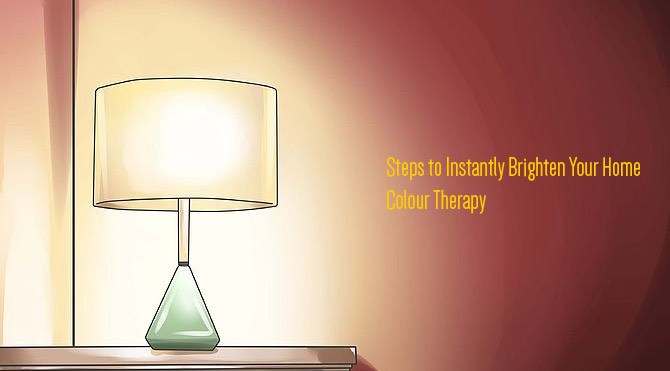
Let’s do a thought experiment. You reach home after a very mundane day but the moment you turn on the lights your mood just magically lifts. What in your opinion might have caused that? It is most probably the presence of colours that brightened your mood. Presence of big splashes of colour with clusters and accents or even a well placed rug or a flower vase can relax and cheer you.
Colours according to stress therapists have the capability to effortlessly stimulate parts of the brain that affect emotions. Bright colours are believed to release serotonin, the chemical associated with good mood and feelings. Recognition of the effect of colours in our lives is not just a new development of modern science. It has been part of ancient wisdom for long.
Properties of Colours
Before you start off with the best colour combinations for your home, you should be aware of the properties of each colour. A few of them are discussed below:
Red
Red represents the fire element and should ideally be used in living rooms, dining rooms, kitchen and gym. Since this is a powerful colour, try not to use this in your bedroom. It works well for your living room if you walk in after a long day.
Orange
Orange lies close to red in the visible spectrum and it also denotes the fire element. It is the colour of optimism that can improve productivity in your home office or study room. It brings in more enthusiasm and pleasure and keeps you lively and playful. It is an excellent choice for decorating your children’s playroom. Shades of orange in the living room can initiate lively conversations with guests.
Purple
Yet another fire element colour is purple. This is very suitable if you have a meditation or prayer room since it is a suitable colour for a quiet introspection. It is advisable to go for light shades of purple such as violet or lavender in your bedroom for a soothing effect and restful sleep. Light tones of pink also have similar effects.
Green
Green is the colour associated with the wood element and has very good balancing and restful qualities. Various shades of green can be used in your living or bedroom to keep your spirit calm and composed. It is a good colour to reduce stress and promote healing.
Yellow
This colour belongs to two elements viz. fire and earth depending on its shade. Stronger shades denote the fire element whereas the lighter ones denote the earth element. Yellow is widely accepted as a mood-lifter. It is compared to the sun because of the positive vibe it brings to the room. This colour should be used in rooms where clarity of thought is very essential.
Blue
Associated with water element, blue colour can control negative emotions. It can thus reduce the stress and tension in your life. However, you should avoid using too much blue on the walls if you have frequent mood swings.
White, Silver and Grey
The colours that belong to the metal element are white, grey and silver. White and silver represent purity and cleanliness but grey can be used to tone them down when required. Just make sure that there is not too much of grey anywhere since that can drop your mood and energy. White also helps open up and brighten rooms, providing the illusion of a larger uncluttered space.
Using Accessories
If it is difficult to change the colour of your walls, then you can try spicing up your room using funcoloured pillows, art pieces, rugs, window treatments or plants. They can act as natural healers of your mood. If you think lighting is the problem, then you can try new light bulbs. Full spectrum lightings mimic sunlight and can be useful in reducing depression.
Colourful Food
Yes, you read it correctly! Since good mood is associated with good colours, it is a great idea to eat food that are colourful as well. Foods coloured green, orange, yellow and red have the capability of bringing you joy, tranquillity and passion and are also rich in nutrients. Out of habit we might eat food that have bland colours but that is not advisable when it comes to bringing up the energy.
Colourful Attire
Just like colourful living rooms, the attire of the host is also instrumental in controlling the moods of the people visiting the house. Try wearing brighter coloured dresses that can make you appear cheery. Avoid dark shades as much as possible when in the house because you don’t want to be in bad mood and neither do your guests.
Conclusion
The fact is that the brighter the colours you are surrounded by, the happier you are. A new coat of bright paint with vibrant colours bring in inspiration, lively ambience and warmth to your rooms. You can always tone down the effects of a bright colour by using darker shades. Colours with therapeutic effects can be used in a myriad of ways to achieve many desired results. Since, painting the house is something that can’t be done every day, you should be careful in choosing the right shade for your rooms. Colour therapists are people you can rely on since they can easily determine the most appropriate colour based on the size of the room, the lighting, ventilation and your tastes. #If dramatic changes to the colour scheme are not possible, subtle alterations can also go a long way in having a positive impact on your state of mind. Go on, try it out!













